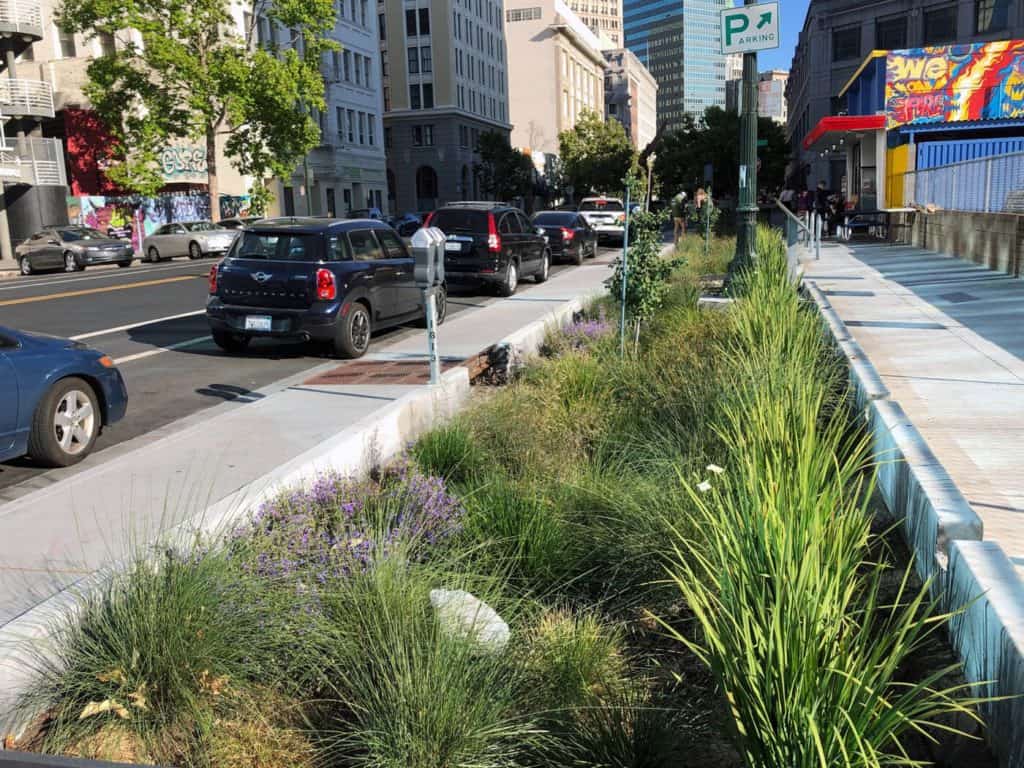As climate change threatens the Bay Area with sea level rise, more severe storms, and extreme heat, it’s imperative that each city plans for equitable climate resilience. To do this, cities need to incorporate climate resilience into their core planning documents. That’s why we have been engaging with the City of Oakland’s General Plan update process, which wrapped up on September 26 when the City Council adopted the final Safety and Environmental Justice Elements. We’re glad to see that the final General Plan reflects many of our climate resilience priorities.

What is a General Plan?
A city’s General Plan is a guiding document that describes a city-wide vision for decades to come on topics such as housing, safety, land use, conservation, and environmental justice. General Plans include high level goals and policies for achieving those goals. We began engaging at the beginning of the process because these updates are an important opportunity to make sure Oakland is planning for climate change.
Oakland is finalizing updates to the Safety and Environmental Justice (EJ) Elements of its General Plan. The Safety Element assesses natural and human-made threats (such as fire, hazardous materials, and flooding) and outlines priorities for mitigating these threats. The EJ Element is a new component of the General Plan outlining priorities for achieving equity and addressing the burden of pollution and climate risk to Environmental Justice communities.
Save The Bay’s General Plan Priorities
Our goals for Oakland’s EJ and Safety Element updates were that they include commitments to:
- Protect homes and facilities from all sources of flood risk, including sea level rise, extreme storms, and groundwater rise.
- Prioritize multi-benefit green solutions to address sea level rise, flooding, urban heat, air pollution, and water pollution, especially in communities most impacted by climate change and pollution.
- Co-develop solutions with community groups, community members, and the Ohlone people so that solutions reflect the lived experience of frontline communities.
- Develop regionally coordinated climate adaptation projects.
We also worked with many community partners who have long been advocating for environmental justice in Oakland. Their additional priorities include ensuring that all neighborhoods have clean air, water, and land; designing streets safe for walking, biking, and playing; and cultivating accessible and well-maintained green spaces.

How We Engaged
The General Plan update process began in November 2021, and we worked with our partners to develop priorities that we wanted to see expressed in the updated General Plan. We met with Oakland city staff, attended General Plan outreach events, and submitted a comment letter to express these priorities. We also worked with Councilmember Dan Kalb to develop a resolution requiring that the City prioritize equitable climate resilience in its General Plan.
The City then used the public input it received to write draft EJ and Safety Elements. We reviewed these drafts and worked with partners to write a comment letter with our recommendations for additional language we wanted to see in the final drafts. In addition to submitting a comment letter signed by 10 organizations, we also met with City Council members and gave public comments at City Council meetings.
Successes
We were pleased that the City engaged and listened to the community during the update process and incorporated many of the recommendations offered by Save The Bay and our partners. These include:
- Aligning urban greening and tree canopy projects with flood resilience and stormwater infrastructure.
- Creating a citywide greening network such that residents in the flatlands of Oakland are no more than half a mile from the network.
- Using vegetative barriers to protect vulnerable neighborhoods from air pollution.
- Incorporating selective harvest, non-commercial thinning, and other Indigenous forest treatments into vegetation management.
- Identifying toxic sites and planning for the risk of groundwater rise mobilizing contaminants left in those sites.

















































